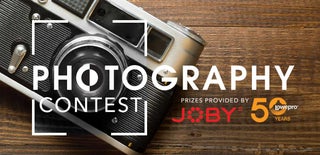Introduction: DIY LENS TESTING WITH a STAR FIELD
Table of Contents:
Introduction
Step One: Materials Needed.
Step Two, The Glass.
Step Three The Stars.
Step Four, Add the Panlight.
Step Five, Baseline.
Step Six, Extension Tubes.
Step Seven, Brand Comparisons.
Step Eight, Close-Up Attachments.
Step Nine, Teleconverters.
Step Ten, Reversing Rings.
Step Eleven, Final Thoughts.
INTRODUCTION:
You will often find people asking about how good various lenses are. This Instructable is about testing and comparing lenses for yourself. I am using equipment from my collection to illustrate the procedure, but this can also be done with a lens that you have borrowed or rented. If you have shake reduction, you can see how effective it is.
There are lots of lens defects, but this test shows the presence of coma, astigmatism, spherical, and the two types of chromatic aberrations. I was primarily interested in the relative sharpness at full aperture and closest focus, with an assortment of attachments like extension tubes. Small apertures like F11 are an equalizer, with most lenses performing the same. Even at full aperture, there was surprisingly little difference between brands.
You can also make a test arrangement with Christmas tree or LED lights against a black background.
I did not spend any money on this. Many of the lenses were purchased long ago at thrift stores or garage sales, at quick sale prices.
Step 1: Materials Needed
1. A digital camera with a removable lens.
2. A tripod & cable release.
3. A sheet of glass or plastic window material, preferably with a frosted surface.
4. Aluminum foil or black paper.
5. Lens to be tested.
6. A panlight.
7. Extension tubes, tele-extender, close-up lenses, reversing rings, and adapters that you want to test.
Step 2: The Glass.
I found a piece of frosted glass that was a good size. You could also use plastic, but it would not be as heat resistant. A piece of printer paper can serve as the frosted surface.
Step 3: The Stars.
Put a sheet of black paper or aluminum foil over the glass and use a pin to cover it with small holes. For small holes, the foil held over glass works well. For bigger holes, put the foil over a piece of cardboard before poking it. This makes a star field with an assortment of holes across the foil. Smaller holes are needed if you are testing equipment to photograph tiny flowers or bugs.
Step 4: Add the Panlight.
Tape the punctured foil over the frosted glass and lean it on the panlight. I used a CFL bulb in the light to keep temperatures down. I put the star field assembly on a table, with the camera on a tripod and facing it. A shutter release was used to prevent movement of the camera.
Step 5: Baseline.
I used a macro lens to establish a baseline image.
Step 6: Extension Tubes.
What would happen if I put a 25mm extension tube on a fast F1.2 lens? Well, there was lots of coma wide open, with a sharp image appearing at F8. Now, I can test to see how much I have to stop it down to get the sharpness I want.
Step 7: Brand Comparisons.
How do the fast 50‘s from various brands compare with each other? And how do they compare with a zoom lens at 50mm? It turns out that they are similar. The older lenses have a little more spherical aberration, but stopping down reduces that.
Step 8: Close-Up Attachments.
I put a +4 diopter close-up lens on a regular 50 and found a much better result than I expected.
Step 9: Teleconverters.
I tried a 80mm tilt/shift lens with a 2X tele-converter and the results were good wide open. The Yashica, with a cheap tele-converter, has a few problems off axes at F1.7.
Step 10: Reversing Rings.
I mounted a famous Takumar thorium lens on a reversing ring and found lots of coma in the image at F1.4 and decent sharpness at F16.
Step 11: Final Thoughts.
Turn off other lights in the room to minimize reflections off the foil.
Keep notes as you work, noting the lens, image number, and details.
Try a few pictures to test motion reduction and hand steadiness.
Keep the camera parallel to the glass plate.
Note that the viewfinder can add it’s own aberrations and mislead you.
Focus by moving the camera back and forth.
Use a magnified live view mode to focus, if you can.
Try adding a tele-converter, extension tubes, and closeup lenses all on the same camera lens.
Try this with a pinhole lens, enlarging lens, TV projection lens, or grandma’s magnifying lens.
This is an entry in the photo contest and you can vote for it.

Participated in the
Photography Contest 2017













